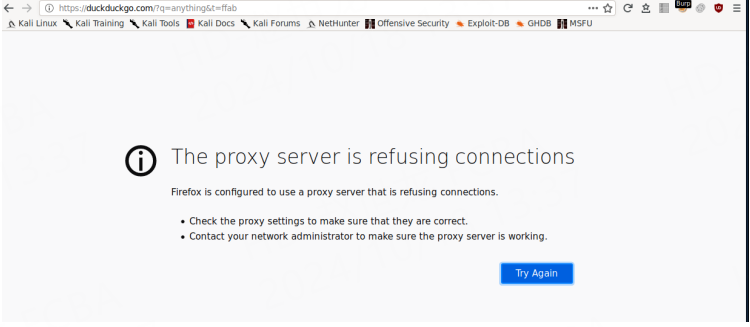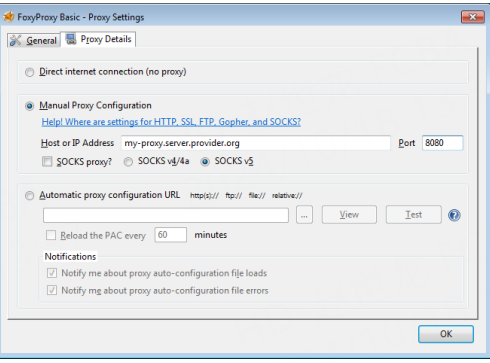Proxy server refused connection Firefox: How to fix it
Many users will encounter the "proxy server refused connection" problem when using the Firefox browser. This problem is usually related to network settings, proxy configuration, or specific settings of the browser. If you encounter a proxy server connection failure while browsing with Firefox, don't panic. This article will provide you with detailed fixes to help you quickly restore normal use of the browser.

1. Understand the reasons why the proxy server refused the connection
Before solving the problem, first understand the common reasons why the proxy server refused the connection. Here are some of the main triggers:
Proxy settings error: The IP address or port number of the proxy server is not configured correctly.
Proxy server unavailable: The server may be down or unable to respond to your request.
Firewall or security software blocking: Sometimes firewalls or security software restrict the connection of the proxy server.
Browser settings problem: Certain settings or extensions in the browser may interfere with the normal operation of the proxy.
After understanding these reasons, we can take targeted repair measures.
2. Check the proxy server settings: Confirm the proxy IP and port configuration
One of the most common reasons why the proxy server refuses to connect is the wrong proxy settings. This problem is particularly common if you set up the proxy manually or use proxy software.
How to check the proxy settings:
Open the Firefox browser.
Click the menu (three horizontal lines icon) in the upper right corner and select "Settings".
Scroll down to the "Network Settings" section and click the "Settings" button.
In the pop-up window, check whether the proxy IP address and port number are correct and make sure they are consistent with the settings provided by the proxy service you use.

Tips:
Automatically detect settings: You can try to select "Automatically detect proxy settings", which can solve some problems caused by manual configuration errors.
Disable proxy: If the proxy settings are not necessary, you can select "No proxy" and connect to the network directly to see if the problem is solved.
3. Check the availability of the proxy server: Is it down or denied access
If you confirm that the proxy settings are correct, but you still can't connect, the problem may be with the proxy server itself. The server may be temporarily down or refuse new connection requests in some cases.
How to check the status of the proxy server:
Try using a different proxy: If you have an alternate proxy IP, you can try switching to another proxy to see if the problem persists. If the new proxy connects successfully, the original proxy server may be in a faulty state.
Use Ping or other network tools: You can use the command prompt or network tools to ping the proxy server to check if it responds. If Ping fails, the server may be down or temporarily unavailable.
4. Check firewall and security software settings: Eliminate blocking issues
Sometimes, firewalls or security software will block connections to proxy servers, especially when the proxy server uses non-standard ports or is marked as unsafe.
How to check and adjust firewall settings:
Open your computer's "Control Panel" and find the "Firewall" settings.
Check the current firewall rules to make sure the Firefox browser or proxy service is not blocked.
If you are using third-party security software, you also need to check the firewall settings to see if it is restricting the connection to the proxy server.
Tip:
Temporarily disable security software: To test whether the problem is related to security software, you can try to temporarily disable the firewall or security software to see if you can connect. If the connection is successful after disabling it, you need to reconfigure the firewall rules.
5. Check for browser extension or configuration issues: Disable conflicting extensions
Sometimes, some extensions or plug-ins in the Firefox browser interfere with the normal operation of the proxy, causing the connection to be rejected. For example, some ad blockers and privacy protection plug-ins may affect the proxy traffic.
How to check and disable extensions:
Open the Firefox browser, click the menu icon, and then select "Add-ons and Themes".
Go to the "Extensions" tab and disable all extensions that may interfere with the network connection (such as ad blockers or VPN plug-ins).
Restart the browser and check if the proxy connection is restored to normal.
Tips:
Browser reset: If disabling the extension does not work, or you can't determine which extension is causing the problem, you can try resetting the Firefox browser to its default state. By resetting, all personalized configurations and extensions will be restored to their initial state, which usually solves the proxy connection problem.
6. Check the system proxy settings: rule out system-level problems
In addition to the browser's proxy settings, system-level proxy configurations may also affect the connection. If your operating system has certain proxy configurations enabled in the network settings, and these configurations are inconsistent with the settings in Firefox, it may cause conflicts.
How to check system proxy settings:
Windows users: Open the Control Panel, go to Network and Internet > Internet Options, and then click LAN Settings under the Connections tab to check if unnecessary proxy settings are enabled.
Mac users: Go to System Preferences > Network, select the current network connection, and then click the Advanced button to check if the proxy settings are correct.
Ensuring that the proxy settings in the system and browser are consistent can effectively avoid conflicts.
7. Use different networks: troubleshoot network environment problems
If you encounter the problem of proxy server refusing to connect in a specific network environment (such as a company or school network), it may be that the network administrator has restricted the use of proxies. In this case, you can try the following solutions:
Switch networks: If you are using a company or public Wi-Fi, you can try switching to a home network or mobile network to see if the problem is solved.
Conclusion
The problem of proxy server refusing to connect to Firefox can usually be solved by checking the proxy settings, the status of the proxy server, the firewall configuration, and the browser extension. Understanding and mastering these repair tips will not only help you quickly restore network connections, but also avoid similar problems in the future. I hope that through the detailed introduction of this article, you can easily solve the proxy connection problem and improve your browsing experience.



















































